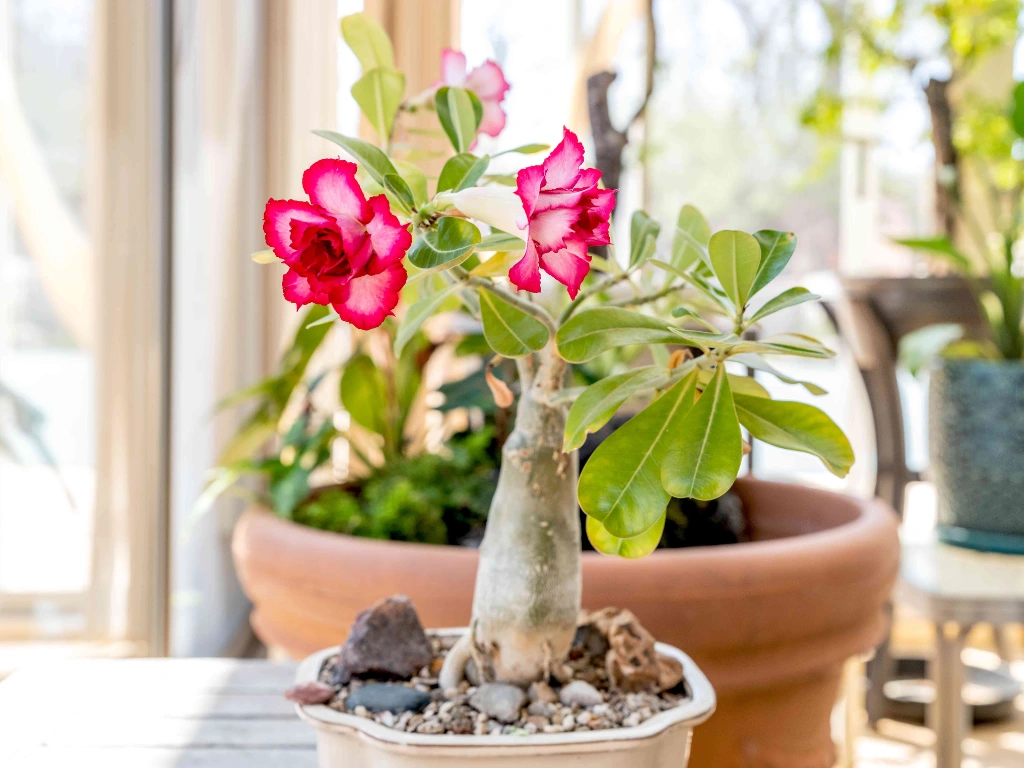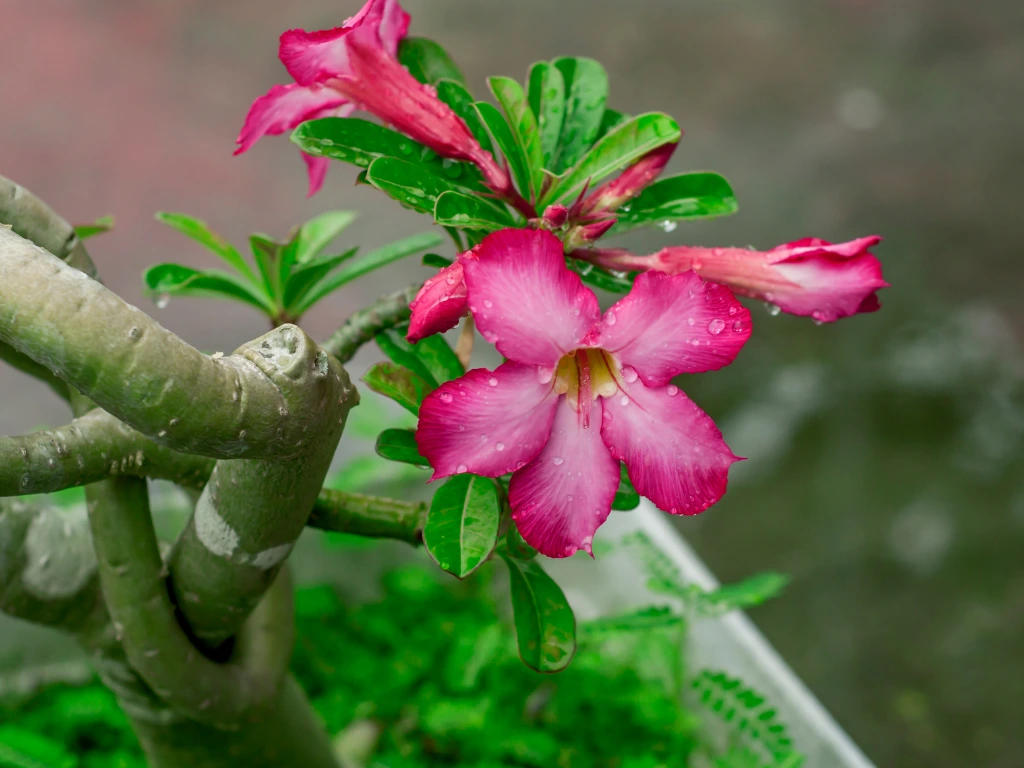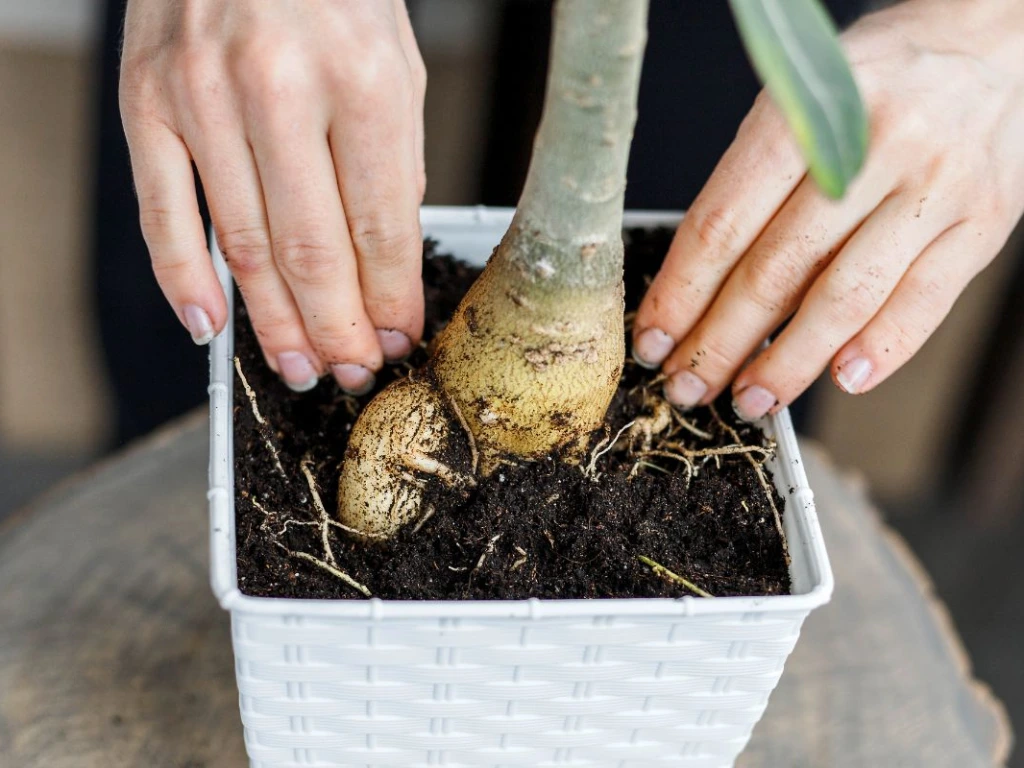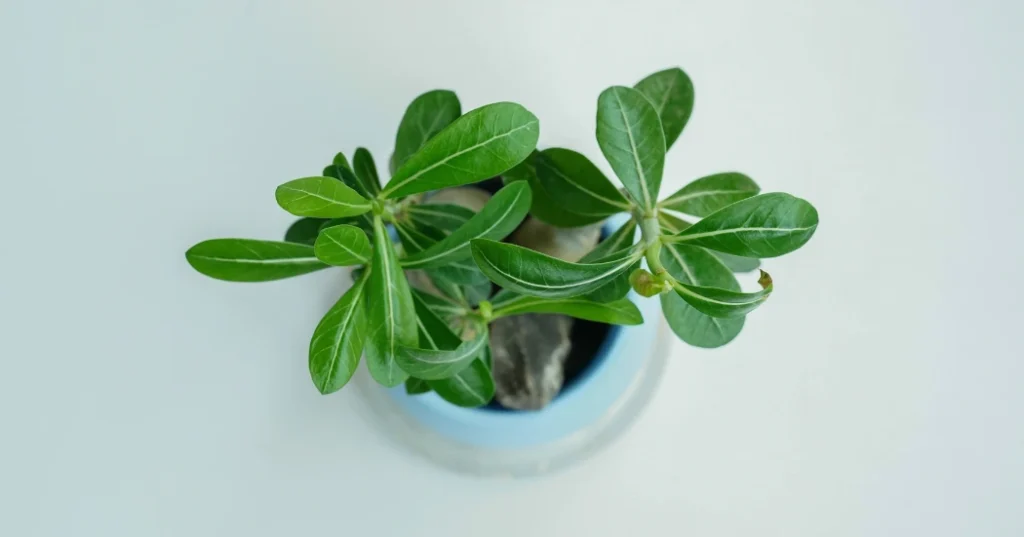Guides
5 Essential Tips for Perfect Desert Rose Indoor Care
When you think of growing plants indoors, you might imagine lush green foliage or even flowering beauties like the Desert Rose. This stunning succulent, known for its vibrant blooms and striking appearance, has become a popular choice for indoor gardeners across the United States. But how do you ensure that your Desert Rose thrives in the confines of your home?
Whether you’re new to gardening or just new to growing Desert Roses indoors, the journey can be both rewarding and tricky if you don’t know the right care techniques. Fortunately, I’m here to guide you with five essential tips for Desert Rose indoor care that will keep your Desert Rose healthy, blooming, and happy inside your home.
Read more: Desert Rose Care: How to Grow Adenium Obesum Plants
1. Providing the Right Light for Your Desert Rose

Desert Rose (Adenium obesum) is native to the arid regions of Africa and the Arabian Peninsula. Naturally, it thrives in bright, direct sunlight. When growing Desert Roses indoors, ensuring it gets enough light is one of the most important factors for success.
How Much Light Does Desert Rose Need?
For your Desert Rose to bloom and grow strong, it needs at least 6 hours of direct sunlight each day. Placing it near a south or west-facing window will give it the best chance to soak up those precious sunrays.
Best Places to Place Your Desert Rose Indoors
If you don’t have a bright window, you might want to consider using a grow light. LED grow lights are an excellent option for providing the intensity and spectrum of light that Desert Roses need. Aim for a light with a color temperature of around 6,500K, which mimics natural sunlight.
If your plant isn’t getting enough light, you’ll notice its leaves starting to drop or its growth slowing down. The flowers might not bloom as vibrantly as they should, which is a clear sign that it’s time to move your plant to a sunnier spot.
2. Watering Your Desert Rose Properly

One of the biggest challenges indoor gardeners face when caring for a Desert Rose is finding the right watering routine. Desert Roses are drought-tolerant plants, and overwatering can lead to root rot and other issues.
How Often Should You Water Desert Rose Indoors?
The general rule of thumb for Desert Rose care is to let the soil dry out completely before watering again. Depending on the season and the humidity in your home, you may need to water your Desert Rose once every two weeks or so. During the winter months, when the plant goes dormant, reduce watering further.
Signs of Overwatering or Underwatering
Signs of overwatering include yellowing leaves, soft or mushy stems, and root rot, which will manifest as a foul smell from the soil. On the other hand, underwatering can result in shriveled leaves and stunted growth. Always check the soil moisture with your finger before adding water-if the top 2-3 inches are dry, it’s time to water.
3. Choosing the Right Soil for Your Desert Rose

Best Soil Mix for Desert Rose
A cactus or succulent soil mix is an excellent choice for Desert Roses. You can also make your own mix by combining equal parts of sand, perlite, and cactus soil. This mix will ensure that water doesn’t stay in the soil for too long, preventing root rot.
If your soil doesn’t drain well, the roots will drown, leading to unhealthy plants. Consider repotting your Desert Rose every 1-2 years, as the soil can become compacted and lose its drainage abilities over time.
How to Repot Your Desert Rose
When repotting, ensure that the new container has drainage holes to allow excess water to escape. Gently remove the plant from its current pot and place it in a new one with fresh, well-draining soil. Repotting should be done during the spring, which is the best time for Desert Rose growth.
4. Fertilizing Desert Rose for Healthy Growth
Fertilizing your Desert Rose helps to support strong, healthy growth and encourage flowering. However, too much fertilizer can harm your plant, so it’s essential to use the right type and quantity.
Best Fertilizer for Desert Rose
Use a balanced, water-soluble fertilizer with equal amounts of nitrogen, phosphorus, and potassium (like a 10-10-10 mix). It’s best to dilute the fertilizer to half strength to avoid overfeeding your plant. During the growing season (spring and summer), fertilize once a month.
When to Fertilize Your Desert Rose
Stop fertilizing in the fall and winter when the plant enters its dormant phase. This break from feeding allows the Desert Rose to rest and conserve energy.
5. Pruning and Maintaining Your Desert Rose
To keep your Desert Rose looking its best, pruning is essential. Regular pruning helps maintain the plant’s shape and can encourage more flowers to bloom.
How to Prune Desert Rose for Better Blooms
Use sterilized scissors or pruning shears to trim off any dead or yellowing leaves. You can also remove the tips of the branches to encourage branching, which leads to a bushier plant with more flowers. Prune during the spring when the plant is actively growing to avoid stressing it out.
Common Issues with Desert Rose and How to Fix Them
Desert Roses are relatively low-maintenance, but they can encounter a few problems:
-
Yellowing Leaves: This usually indicates overwatering or a lack of nutrients.
-
Leggy Growth: If your Desert Rose is growing long and spindly, it may not be getting enough light.
-
Pests: Aphids and mealybugs are common pests on Desert Roses. You can treat these pests with a diluted insecticidal soap or neem oil.
Frequently Asked Questions (FAQs)
Q1: How often should I water my Desert Rose?
-
Water your Desert Rose every 2-3 weeks, ensuring that the soil is completely dry before adding more water.
Q2: Can Desert Rose survive in low light conditions?
-
Desert Roses need bright, direct sunlight to thrive. If placed in low light, they may not bloom or grow properly.
Q3: What’s the best soil for Desert Rose?
-
A well-draining cactus or succulent soil mix is ideal for Desert Rose plants.
Q4: How can I get Desert Rose to bloom indoors?
-
Ensure your plant gets plenty of sunlight, water it properly, and provide occasional fertilization. A little patience and the right care will lead to beautiful blooms!
Conclusion
Caring for a Desert Rose indoors is truly rewarding when done right. By following these five essential tips (providing enough light, watering properly, choosing the right soil, fertilizing correctly, and pruning regularly), you’ll have a healthy, thriving Desert Rose that will add beauty to your home for years to come.
If you’re interested in learning more about other indoor plants, be sure to check out our related articles on succulent care and indoor gardening tips. Happy gardening, and remember: your Desert Rose deserves the best care you can give it!


9 Common Christmas Cactus Problems and How to Fix Them
Have you ever walked past your Christmas cactus and wondered why it suddenly looks sad? [...]
Nov
Swedish Ivy Care: How to Grow a Healthy, Thriving Plant
Have you ever looked at your Swedish Ivy and wondered why the leaves are turning [...]
Nov
Avoid These 10 Garlic Planting Mistakes for Bigger, Healthier Bulbs
Growing garlic at home is one of the most satisfying things a gardener can do [...]
Nov
How to Prevent Christmas Cactus Bud Drop: Tips for a Healthy Bloom
Have you ever noticed your beautiful Christmas cactus (Schlumbergera) starting to lose its buds just [...]
Nov
Discover 7 Stunning Types of Night-Blooming Cereus
Have you ever waited for a flower that only opens at night and then disappears [...]
Nov
How to Propagate Comfrey from Root Cuttings: Easy Guide for Beginners
If you’re looking to grow your own healthy comfrey plants without spending too much, propagating [...]
Nov